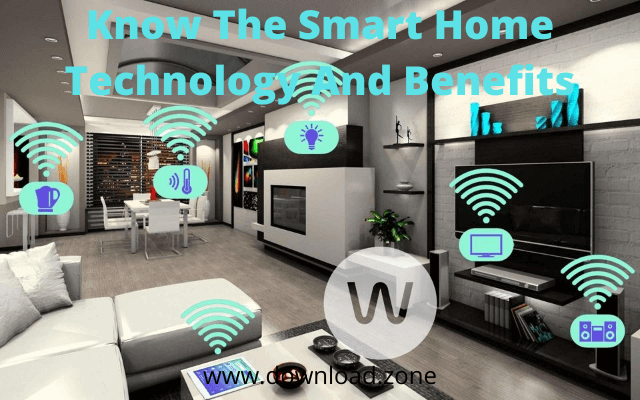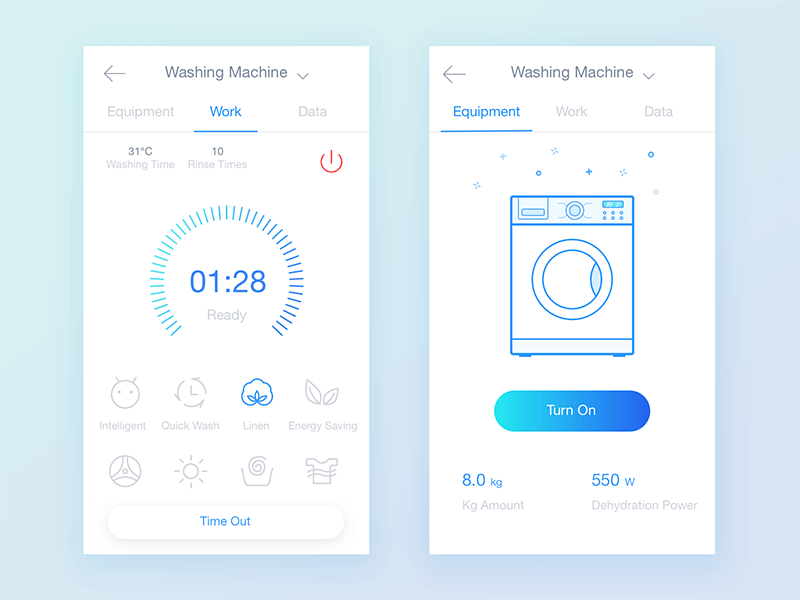Everything You Need To Know About Smart Home Technology Benefits
Being at home all around to complete different domestic tasks isn’t your bread and butter, as we all must be highly occupied in offices or workplaces to fulfill our dreams and goals by working in our professions. Because professional responsibilities are running on the head may give you a bit of ignorance or a slip of memory for a while and suddenly you thought that your home security alarm might not be turned on after you reset it last week or you start doubting that the coffee maker still heating up after you put your coffee last night, or you have a big concern over your refrigerator not set down after you stored the tuna fish received through Amazon yesterday.
But, thanks to the new age smart home technology, that could wipe out all of the above worries in a matter of moments, with your smartphone or tablet enabled with the Internet of Things. By connecting yourself with these smart devices and appliances to ‘communicate’ with each other to do things on behalf of you, like alarming kids to stop watching tv and your smart refrigerator create a shopping list and ordering dairy, grains, bakery, and other foodstuffs to the online grocery store.
ad
You can control and command devices in your home network that runs with electricity. You can operate that device by giving commands in different forms like voice command, remote control, through a tablet, or via smartphone. Most applications connect to home security, lighting, white goods, electronics entertainment equipment, and kitchen appliances like microwaves, coffee makers, etc. You may also check Disease Research Software for your home.

What is Smart Home Technology?
The smart home technology has a new word too – domotics that derived from Latin “Domus” means home. In the broad public domain, a smart home is a residential place that utilizes the internet-connected devices to facilitate remote control, monitoring, and management of home appliances and electronics systems, also popular as home automation. It provides energy-efficient solutions along with comfort, convenience, and home security to the homeowners.
ad
Based on the homeowners’ preferences the internet of things (IoT), smart home systems, and devices often operate together, sharing consumer usage data among themselves and automating actions.
The smart home idea, once a draw for the tech-savvy or the wealthy, first introduced by George Jetson, what used to be a quirky industry that churned out hard-to-use and frilly products is finally maturing into a full-blown consumer trend. Smart homes and home automation are becoming more common. Instead of start-up companies, more established tech organizations are launching new smart home products.
The demand for smart home systems into the mainstream boost by the rapid demand acceptance of smartphones, tablet computers, and other new-gen innovative gadgets. These ultra-portable computers are everywhere, and their seamless Internet connectivity means they can be configured to control myriad other connected devices in the network. It’s all about the Internet of Things.

Examples of home automation
Our life and everyday activity are being influenced by technology, let’s see a few handful examples of the smart home systems.
- Now On-demand video and music are handy to access and the content delivered through applications that are connected to the internet and smart TVs. Some smart TVs also offer voice or gesture recognition.
- In addition to being able to be controlled remotely and customized, smart lighting systems, such as Hue from Philips Lighting Holding B.V., can detect when occupants are in the room and adjust lighting as needed. Smart lightbulbs can also regulate themselves based on daylight availability.
- Smart thermostats, such as Nest from Nest Labs Inc., come with integrated Wi-Fi, allowing users to schedule, monitor, and remotely control home temperatures. These devices also learn homeowners’ behaviors and automatically modify settings to provide residents with maximum comfort and efficiency. Smart thermostats can also report energy use and remind users to change filters, among other things.
- Using smart locks and garage-door openers, users can grant or deny access to visitors. Smart locks can also detect when residents are near and unlock the doors for them.
- With smart security cameras, residents can monitor their homes when they are away or on vacation. Smart motion sensors are also able to identify the difference between residents, visitors, pets, and burglars, and can notify authorities if suspicious behavior is detected.
- Pet care can be automated with connected feeders. Houseplants and lawns can be watered by way of connected timers.
- Kitchen appliances of all sorts are available, including smart coffee makers that can brew a fresh cup automatically at a programmed time; smart refrigerators that keep track of expiration dates, make shopping lists or even create recipes based on ingredients currently on hand; slower cookers and toasters; and, in the laundry room, washing machines and dryers.
- Household system monitors may, for example, sense an electric surge and turn off appliances or sense water failures or freezing pipes and turn off the water so the basement doesn’t flood, for example. You may check Vivint pricing here and see their smart home products.
Home Automation Software And Technology

Smart homes may make life easier and more convenient. Who wouldn’t love being able to control lighting, entertainment, and temperature from their couch? Whether you’re at work or on vacation, the smart home will alert you to what’s going on, and security systems can be built to provide an immense amount of help in an emergency. For example, not only would a resident be woken with notification of a fire alarm, but the smart home would also unlock doors, dial the fire department, and light the path to safety.
Here are a few more examples of cool smart home tricks:
- Light a path for nighttime bathroom trips.
- unlock your door automatically as you approach.
- Feed your pets on a schedule with a preset amount of food.
- Instantly create mood lighting for any occasion.
- Program your television so that your children can watch only at certain times.
- Warm the bedroom before you get out of bed so that it’s nice and toasty when you get up.
- Turn on the coffee maker from the bed.
Smart homes also provide some energy efficiency savings. Because systems like Z-Wave and ZigBee put some devices at a reduced level of functionality, they can go to sleep and wake up when commands are given. Electric bills go down when lights are automatically turned off in empty rooms, and rooms can be heated or cooled based on who’s there at any given moment. One homeowner boasted that her heating bill was about one-third less than a same-sized normal home. Some devices can track how much energy each appliance is using and command power hogs to use lesser.
Conclusion: Smart home technology promises tremendous benefits for and seeing as a revolution in our everyday life, It may also have some negative impacts but that is a matter of a separate discussion. Now, let’s see how much there in the IoT to offer via smart homes.
ad


Comments are closed.